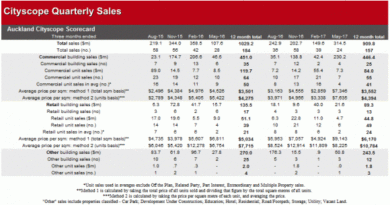Types Of Investor Home Loans / Mortgages
updated 15th October 2016
Fixed Rate Home Loans
Fixed rates are priced according to pre-determined interest rates which are independent of the fluctuations in the official cash rates set by the Reserve Bank of Australia (RBA).
Stability is the main draw for the fixed rate loan, and you normally pay for this in terms of higher rates and fees. Drawbacks include an early exit fee if you decide not to fulfil the full term of the loan.
Variable Rate Home Loans
There are two types of variable rate loans: standard variable rate and basic variable rate loans. Variable rate loans track the interest rates set by the RBA and they typically incorporate flexible options such as portability, split, and redraw. Basic variable loans offer lower rates but less features. Both tend to be cheaper than fixed loans as they’re subject to the rise and fall of rates.
Introductory Rate Home Loan
Dubbed as ‘honeymoon rates’ because of their popularity with first homeowners, these types of loans tend to offer the cheapest rates discounted for a set period of time. When the ‘honeymoon period’ ends, interest rates can shoot up.
Construction loan
Variable rates and interest-only repayments help borrowers with building costs, with full repayment generally being required on completion.
100% Home Loan
Little or no money is required upfront, but interest rates tend to be higher than the standard variable rate. Mortgage lenders insurance of around 2.5% of the loan amount will be necessary to allow for the extra risk involved.
Equity release
This involves borrowing equity from your home. Most popular is the (generally more expensive) reverse mortgage, which allows the homeowner to borrow against their home, repaying via the sale of the house when they die or move into care.
Low Doc or No Doc Home Loan
Quick and easy to apply for, they require little or no financial documentations to prove income, savings history and capacity to repay the loan. These loans may attract higher interest rates depending on the perceived risk by the lender.
Unlike owner-occupier loans where borrowers can borrow the whole amount of the property, lenders will usually approve a lower proportion of the loan for investments in relation to the value of the property
Features to look for in an investment loan
1. Offset
An offset is a separate savings account linked to your mortgage. The balance is offset daily against the loan amount, meaning ‘notional’ interest is earned at the same interest rate as your loan.
You pay less interest on your loan as you’re only charged interest on the balance. For example, if you have a $500,000 mortgage and $10,000 cash on the offset account, you’ll only have to pay interest on $490,000 each month.
This facility is particularly useful for investors as they can have all their income sources, including rental income and other cash resources, deposited in this account. This allows them to reduce the interest being charged on their mortgage.
2. Combination or split facility
A mixture of fixed and variable, this enables investors to hedge their bets. If the interest rates go up, you’re protected by the fixed portion and if it falls, you’re able to benefit from the variable rate.
Robert Projeski, managing director with Australian Mortgage Options adds that having the option to fix the loan is important, and he recommends linking it to a 100% offset account.
3. Line of credit
A line of credit (LOC) allows investors to use home equity to raise additional finance, either as a standalone loan or a facility attached to your existing loan. This offers greater flexibility, but can be dangerous if handled irresponsibly.
“We strongly advise against line of credit (LOC) as a standalone feature for an investment account,” warns Projeski. “When people put their salary into their LOC account for personal use they can’t legitimately claim the interest component on that portion of the loan.”
The result is “a real administrative nightmare”, as it then becomes necessary to work out exactly what amount was used for personal expenditure and what was used for investment.
4. Portability
If you’re in a position where you might need to sell one property and buy another, the substitution and portability factor is vital. “There should be limited or no fees involved in that part of the transaction,” says Projeski.
By having the ability to transfer the loan to another property enables you to save on stamp duty on the mortgage as well as discharge costs. “As long as your loan is transportable, you can move from one property and not get caught with exit fees,” he says. “If you’re talking about a $500,000 loan, you could be saving $5,000–6,000 with some lenders by transferring it over.”
5. Extra repayments
This feature is handy when you have lump sum income. This will help you reduce your loan and cut the term of the loan, saving you on interest payment. Most loans, except some basic loans and fixed rate loans, offer this feature.
6. Redraw
The ability to access extra funds from the mortgage, and use them as you see fit, offers added flexibility to investors.
“The flexibility factor is more important in most cases than the actual interest rate,” says Projeski. “Ongoing fees, flexibility, offset, redraws, interest in advance – all those things save you years off your investment property home loan and sometimes that’s worth a lot more than a particular honeymoon loan that the banks might try and entice you with. Don’t be tempted! Make sure you’ve got all these features available to you to create wealth not only for today but also for tomorrow.”
This article has been republished with permission from Your Investment Property magazine. Try our Loan Repayment Calculator and find the best repayment strategy for you.



